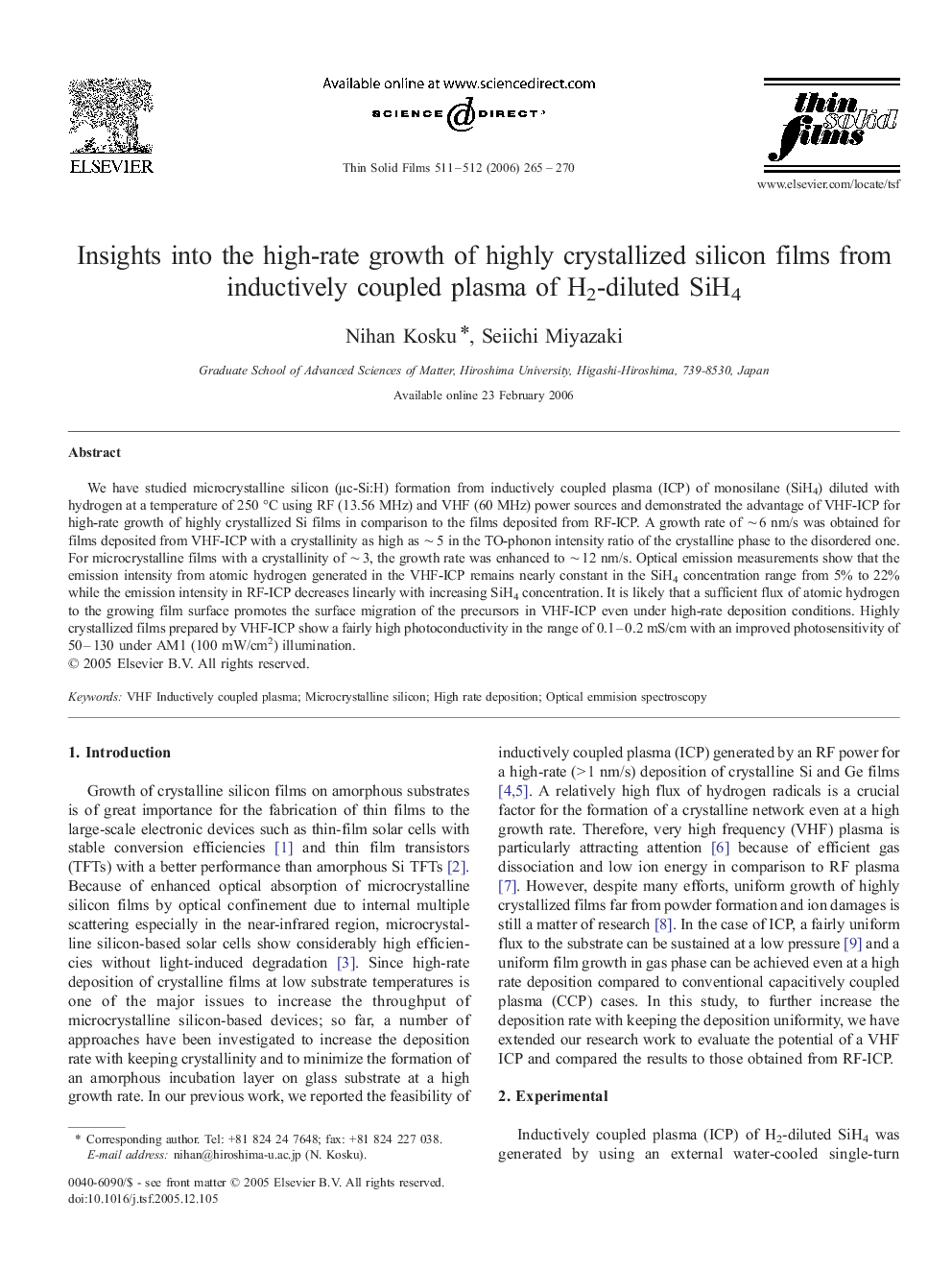| Article ID | Journal | Published Year | Pages | File Type |
|---|---|---|---|---|
| 1673317 | Thin Solid Films | 2006 | 6 Pages |
We have studied microcrystalline silicon (μc-Si:H) formation from inductively coupled plasma (ICP) of monosilane (SiH4) diluted with hydrogen at a temperature of 250 °C using RF (13.56 MHz) and VHF (60 MHz) power sources and demonstrated the advantage of VHF-ICP for high-rate growth of highly crystallized Si films in comparison to the films deposited from RF-ICP. A growth rate of ∼ 6 nm/s was obtained for films deposited from VHF-ICP with a crystallinity as high as ∼ 5 in the TO-phonon intensity ratio of the crystalline phase to the disordered one. For microcrystalline films with a crystallinity of ∼ 3, the growth rate was enhanced to ∼ 12 nm/s. Optical emission measurements show that the emission intensity from atomic hydrogen generated in the VHF-ICP remains nearly constant in the SiH4 concentration range from 5% to 22% while the emission intensity in RF-ICP decreases linearly with increasing SiH4 concentration. It is likely that a sufficient flux of atomic hydrogen to the growing film surface promotes the surface migration of the precursors in VHF-ICP even under high-rate deposition conditions. Highly crystallized films prepared by VHF-ICP show a fairly high photoconductivity in the range of 0.1–0.2 mS/cm with an improved photosensitivity of 50–130 under AM1 (100 mW/cm2) illumination.
